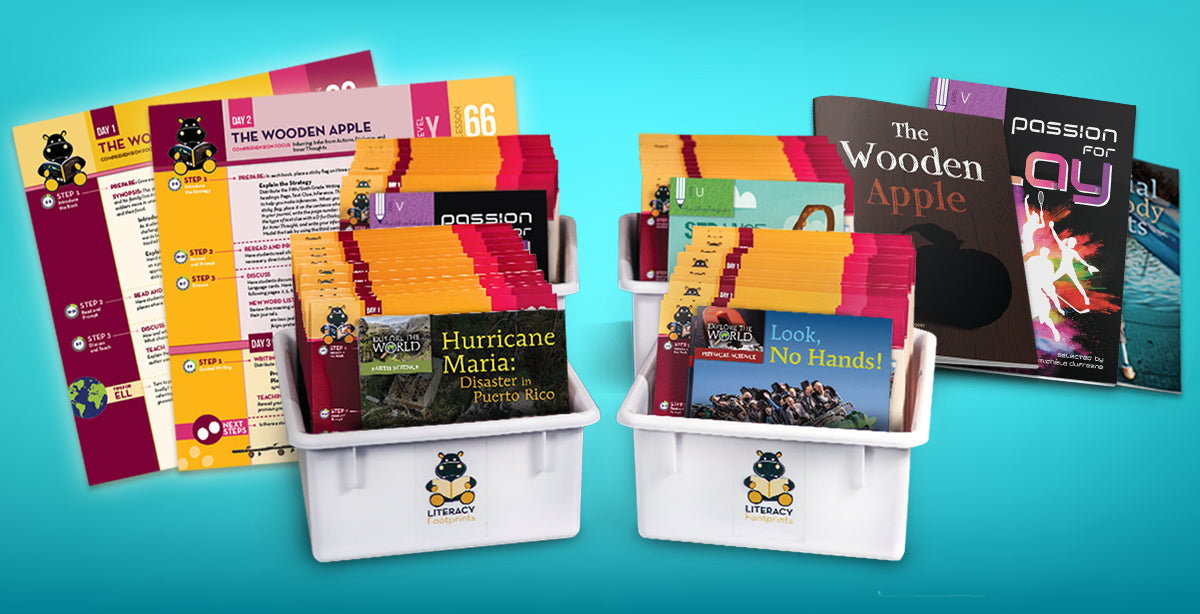
We’ve all been caught off guard by the Covid-19 pandemic and the need to temporarily close our schools. One of the many negative consequences of the closures is that most children are now losing ground in reading. Once schools reopen, all our students, especially our striving readers, will need a differentiated, structured guided reading program that includes reading, writing, and word study. Although there are many programs available, I strongly recommend the Literacy Footprints Classroom Collection (K–6), written by Michèle Dufresne and me. The collection follows my framework as presented in The Next Step Forward in Guided Reading (Scholastic, 2016), and it has proven to be a great resource for teachers and a net gain for students.
Let me highlight a few important elements that make this program so powerful:
- Grade-Leveled Texts: The books match the recommended Lexile ranges for each grade and have been carefully sequenced to provide a gradual increase in text complexity. They are skillfully written, beautifully illustrated, and highly engaging. Your students will fall in love with such colorful characters as Bella and Rosie, Clarence the Dragon, and Rusty the Robot. Throughout the quarantine, I’ve been doing Zoom lessons with several striving readers, and they love the books. An added benefit of the nonfiction selections is that they add to the students’ background knowledge and increase their vocabulary.
- Integrated Lesson Structure: Each Literacy Footprints lesson includes instruction in reading, writing, and word study. What your students learn in word study can help them decode words in reading and spell unfamiliar words in writing. Also, as students write about a text they have read, they will extend their comprehension and learn important writing skills.
- Lesson Plans: Each book in the K–6 collection comes with a structured, ready-to-teach lesson card that includes suggestions for each part of the lesson. Novice guided reading teachers can learn the procedures, and experienced teachers can use the cards as a stepping-stone for tweaking their lessons to support the unique needs of their students. The lessons target the needs of readers at each reading stage, Pre-A through fluent, and teach appropriate decoding, fluency, vocabulary, phonemic awareness, and comprehension.
- Useful Resources: You’ll find an abundance of resources at https://www.literacyfootprints.com/teacher-resources, including downloadable lesson plans, assessment tools, and scores of videos that demonstrate effective teaching of word study, reading strategies, comprehension, vocabulary, and writing.
- Results: I’ve heard from hundreds of teachers from across the United States and beyond who tell me that their students have made amazing growth using my Next Steps lesson framework with the Literacy Footprints classroom kits. In one of my recent literacy tips, I featured the impressive data from the Canadian International School in Singapore. Click here to read about their experience. Additionally, Lindsay Unified School District in Lindsay, California, had an independent research company conduct a study on how guided reading impacts student reading achievement. The district provided teachers (called learning facilitators) with a Literacy Footprints kit and offered a comprehensive four-day learning workshop, with the additional option for teachers to earn a certification of proficiency via a portfolio of practice and a lesson observation.
Here are a few quotes from the report:
When we return to school, there will be precious children who need your help to become better readers. The Literacy Footprints Classroom Collection will help you help them. I invite you to “follow in our footprints” and let us support you as teachers of readers.




